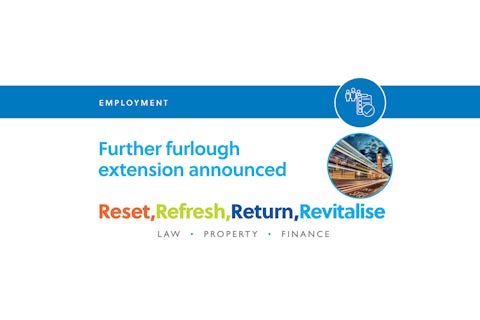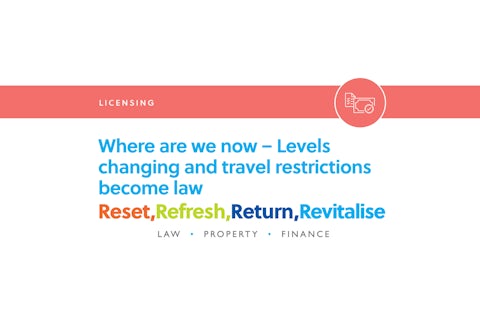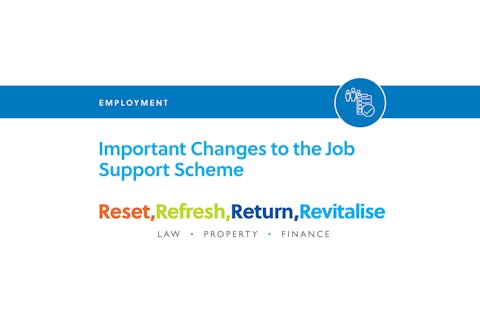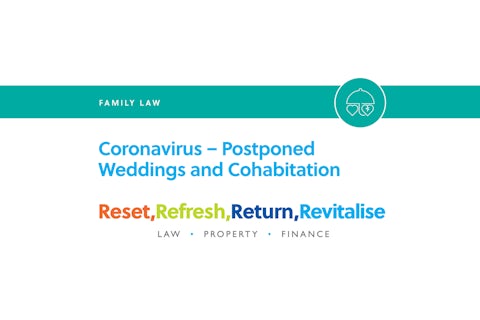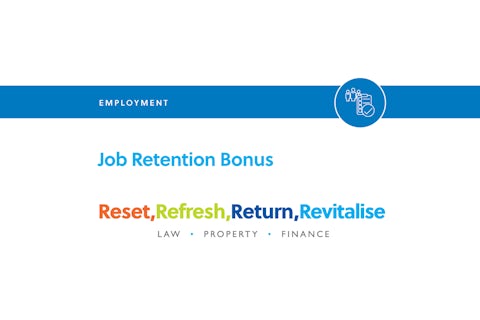January 19, 2021
Full articleDuring this challenging period, small business owners can take five important steps to protect their businesses, including taking advantage of the government’s new forms of support.
There’s no getting away from the fact that recent events have changed the way we live and do business.
If you’re a business owner, it’s likely you’ll be feeling a range of emotions, and may be worried about your business, your employees and your own financial future. Without knowing immediately what to do next, it can be easy to allow worry and stress to take hold.
In this time of crisis, the immediate focus is how to survive. And then, how to thrive.
There are some vital strategies and tactics you can implement right now and in the medium term to ensure your business does both – benefiting you, and those you employ.
Step 1: Prioritise
Start with you. Take care of you and your personal and business needs.
Start with you. Take care of you and your personal and business needs.
Think about the key relationships in your business and how you can support them. This may include how you can reduce your cost burden on the business, clients, suppliers, your team, or investors. Ensure staff have the necessary systems and access to work from home, and perhaps think about harnessing any advantages working from home can bring.
Create a communications plan that provides employees and other stakeholders with status updates as well as actions taken. Regularity and reassurance go hand in hand: commit to frequent check-ins with your team.
Step 2: Access government support
The government has offered a considerable level of support to businesses and employers – there may be several options available to you, depending on your business’s needs and size.
The government has offered a considerable level of support to businesses and employers – there may be several options available to you, depending on your business’s needs and size.
The package of measures to support businesses so far includes:
• A Coronavirus Job Retention Scheme. This enables employers whose businesses have been severely affected by coronavirus to ‘furlough’ workers, and claim for 80% of their monthly wage costs, up to £2,500 a month.
• VAT and Income Tax deferral for three months if you’re a UK VAT registered business.
• A Statutory Sick Pay (SSP) relief package allows some small and medium sized businesses to reclaim up to two weeks’ SSP per eligible employee.
• A 12-month business rates holiday for all retail, hospitality, leisure and nursery businesses based in England. Small businesses that already pay low (or zero) business rates because of small business rate relief, rural rate relief or tapered relief could be eligible for a one-off grant of £10,000.
• Cash grants for retail, hospitality and leisure businesses. Depending on the rateable value of your business, you could be eligible for a grant of £10,000 to £25,000.
• The Coronavirus Business Interruption Loan Scheme offers access to loans, overdrafts, invoice finance and asset finance of up to £5 million, for up to six years. The Business Interruption Payment means the government will cover the first year of interest payments and any lender-levied fees.
• A dedicated Corporate Financing Facility, run by the Bank of England, which will buy short-term debt from larger companies. This supports liquidity among larger firms, helping them bridge coronavirus disruption to their cash flows through loans.
• The HMRC Time To Pay Scheme may be available to businesses who need support with their tax affairs during this period of disruption.
• VAT and Income Tax deferral for three months if you’re a UK VAT registered business.
• A Statutory Sick Pay (SSP) relief package allows some small and medium sized businesses to reclaim up to two weeks’ SSP per eligible employee.
• A 12-month business rates holiday for all retail, hospitality, leisure and nursery businesses based in England. Small businesses that already pay low (or zero) business rates because of small business rate relief, rural rate relief or tapered relief could be eligible for a one-off grant of £10,000.
• Cash grants for retail, hospitality and leisure businesses. Depending on the rateable value of your business, you could be eligible for a grant of £10,000 to £25,000.
• The Coronavirus Business Interruption Loan Scheme offers access to loans, overdrafts, invoice finance and asset finance of up to £5 million, for up to six years. The Business Interruption Payment means the government will cover the first year of interest payments and any lender-levied fees.
• A dedicated Corporate Financing Facility, run by the Bank of England, which will buy short-term debt from larger companies. This supports liquidity among larger firms, helping them bridge coronavirus disruption to their cash flows through loans.
• The HMRC Time To Pay Scheme may be available to businesses who need support with their tax affairs during this period of disruption.
Information about how to access any of the schemes listed above can be found on the government website.
Step 3: Evaluate your liquidity
Maintaining liquidity is key. Ensure you collect your cash and manage debtors closely. Can you extend or defer payment to creditors, or are you eligible for one of the government support options above?
Maintaining liquidity is key. Ensure you collect your cash and manage debtors closely. Can you extend or defer payment to creditors, or are you eligible for one of the government support options above?
Work out weekly expenditure and make a contingency plan – this could involve contacting existing debt providers for support, or exploring financial instruments like discounting, factoring, supply chain loans and term loans.
You might want to assess each line of your profit and loss account. Can you enjoy payment holidays, reduce or enjoy rebates on rent, communication and utility costs?
Step 4: Register the risks
As with any crisis, it’s likely your business is facing new challenges, and it’s important to take stock of those. A Risk Register approach is a great way to stress test your business, helping you to identify the possible risks facing your company and, should they be realised, their likely impact.
As with any crisis, it’s likely your business is facing new challenges, and it’s important to take stock of those. A Risk Register approach is a great way to stress test your business, helping you to identify the possible risks facing your company and, should they be realised, their likely impact.
List the possible risks, in areas such as your team, clients, technology or data, and consider the potential outcome should they occur. Define the likely impact and likely probability (out of five), and multiply the two numbers to give each a risk a ‘score’ or priority.
From there, list what action you can take to mitigate the risk, and assign people to your action plan. Given the nature of the beast, your plan will need to flex as the pandemic impact unfolds.
Step 5: Review your insurance
Review your policy and check with your insurance broker if you need confirmation of the type of insurance you have purchased. Unfortunately, it is unlikely that the vast majority of businesses will have any cover for losses following COVID-19.
Review your policy and check with your insurance broker if you need confirmation of the type of insurance you have purchased. Unfortunately, it is unlikely that the vast majority of businesses will have any cover for losses following COVID-19.
However, businesses that have cover for Trade Credit Insurance will have cover for their customers who owe money for products or services and do not pay their debts or pay them later than the payment terms dictate.
One of the greatest challenges at a stressful time is managing ourselves. Be sensible, practical and, above all, calm when managing risk and, where appropriate, engage an expert who can help you.
The information and opinions contained in this blog are for information only. They are not intended to constitute advice and should not be relied upon or considered as a replacement for advice. Before acting on any of the information contained in this blog, please seek specific advice from Gilson Gray Financial Management.



